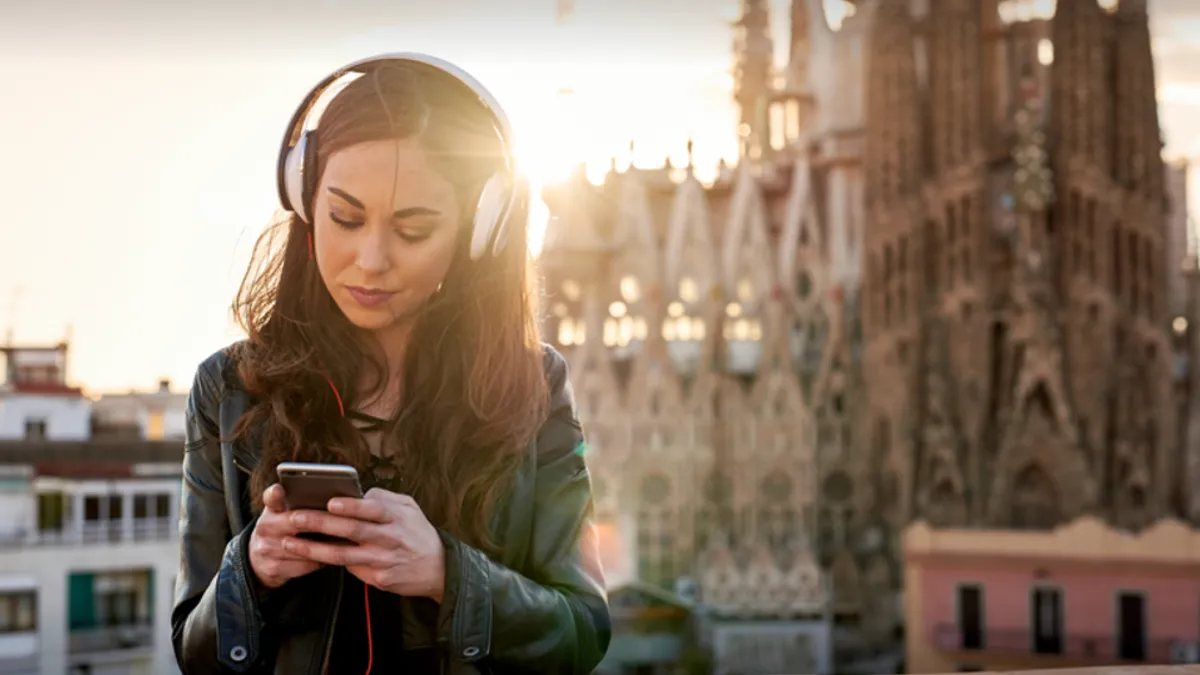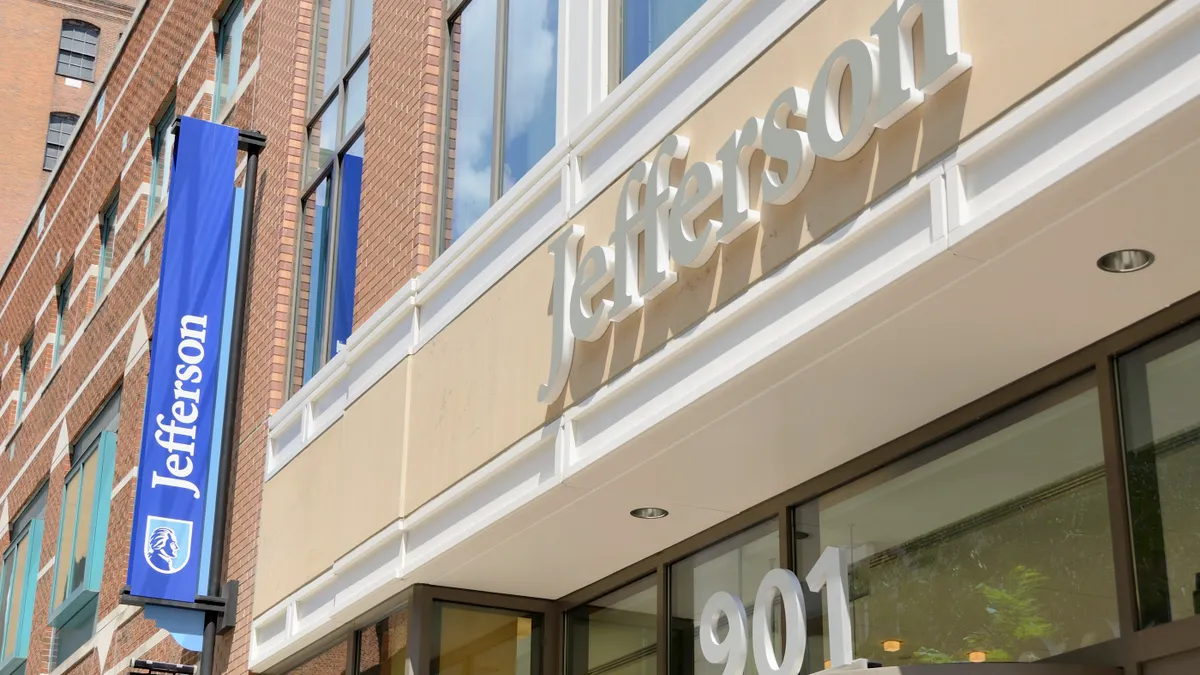It’s a beautiful day at the University of Washington. The weather is perfect. Mount Rainier stands watch over the campus, and the ducks are paddling in Drumheller Fountain. A prospective family waits, ready and excited to take it all in. But there’s a problem — they missed the scheduled guided campus tour. Even with a packed calendar of tours, we were finding demand for more, especially during off hours and weekends.
Given how much influence the campus visit has in the overall college selection process, this was a problem we needed to fix. But how do you reach visitors when schedules don’t align? It’s estimated that in 2017, at least 82% of Americans have a smartphone in their pocket. What better way to reach people than through the devices they already have and are comfortable using?
Today, our mobile tour app allows prospective students to experience a slice of campus on their own time, at their own pace. But our reach isn’t limited just to campus. With a mobile app, a prospective student and their family can experience our campus from wherever they are. While most of our mobile app sessions have occurred on campus, some have happened as far away as China. A natural extension of our team’s recruiting efforts both at home and away, the app has logged over 18,000 sessions since we launched about a year ago.
With this generation of mobile-savvy students, though, not just any mobile experience will do. For UW, standing out meant creating a mobile tour app that was engaging and authentic, a true representation of the student experience. Our goal wasn’t just to point out buildings on campus, but to give visitors a feel for what it was like to live and learn among those buildings. To help us bring this philosophy to fruition, we decided to use the Guidebook mobile app platform, which allowed us to use the self-guided tour framework to create a true multimedia experience that embodies the UW identity. With the ability to record our own content and control the photography, we were able to shape the storytelling to accurately reflect our campus.
To help you successfully translate an authentic student experience into your mobile app, here are some tips we learned along the way.
Share stories, not stats
Stats are boring, and it’s easy enough to look them up elsewhere. Stories are what spark an emotional response and help a prospective student find a connection—an important consideration since many students report making their final decision to commit to a school based on a gut feeling. And, if you’re going for an authentic storytelling experience, who better to convey what it’s like to be a student on campus than the students themselves? Nearly all voices you hear in the UW mobile app are those of UW students. Two drama students, who also happened to work at the front desk in our Office of Admissions, serve as narrators. They provide navigational clues and logistical instructions for using the app, but they also share their own experiences.
We didn’t limit the student voice to just the narrators, though. The UW is a big campus with opportunities for different types of students. We wanted the tour to reflect that, so we interviewed students about topics and places all over campus—from places they like to study and their thoughts on a particular campus sculpture to the excitement of a Husky football game and how they use light rail to access downtown. We found students more than willing to share their enthusiasm and passion for the UW. Our goal was to showcase that passion to give prospective students a taste of the Husky Experience and, hopefully, an avenue through which they could see themselves as part of it.
TIP: Don’t waste time and attention span on statistics. Instead, use the buildings around campus as vessels to tell a story: What happens in the building? How do students feel about the experiences they’ve had and the people they’ve met in that place? Can the stops be augmented with additional sounds a visitor might hear in or near the building?
Choose tour stops wisely to reflect values
At the UW, it’s our belief that what you care about can change the world. Inclusivity is core to our culture, and we strive to create community dialogue around issues of diversity, inclusion, social justice, race, and equity.
One of the ways we were able to highlight that with our tour was to include Intellectual House, or Wǝɫǝbʔaltxʷ as it is called in the native Salish language, as one of the tour stops. Built in the longhouse style, Intellectual House provides a learning and gathering space for American Indian and Alaska Native students, faculty and staff, as well as others from various cultures and communities, to come together in a welcoming environment to share knowledge. Including this stop on the tour and using it as a conversation starter about other issues and values allowed us a way in which we could share some of what’s meaningful to us with our visitors.
TIP: It can be challenging to figure out what buildings and spaces to include on a tour. When considering a stop, ask yourself what message you hope your visitors to take away from that location. Does that tour stop capture a fundamental piece of the student experience? Does it reflect the core values of your institution?
Set a realistic production timeline
When it comes to recruiting, a bad impression is worse than no impression. With that in mind, it was important to us to take the time to ensure that our tour portrayed an authentic and accurate picture of the student experience on campus. That’s not to say that we won’t continue to develop and change our content, but we wanted to be sure that we were proud of the story we were telling before we released the app.
We discovered that pulling together the logistical details of the story wasn’t always as simple as we thought. To ensure that you create a realistic production timeline for your tour creation, be sure to consider such things as:
-
Student schedules
-
Time for writing…and rewriting
-
Multimedia components, like culling photographs and editing audio
-
Required approvals from campus partners, like marketing and communications departments or other influencers
TIP: Enlist the support of a multimedia specialist, be they someone on staff or a student volunteer. Their expertise will increase your opportunity for success by supporting a production process that’s more efficient and high quality, giving you a better tour in the end.
For the University of Washington, building a mobile tour has allowed us greater reach than we could achieve with traditional guided tours alone. It’s given us another tool with which to connect with prospective students, allowing them a taste of life on campus and helping them find a place where they can see their future.
Tonya Namura is a public information specialist, and Jocelyn De Jong is senior associate director of admission for recruitment & communication at the University of Washington.

















